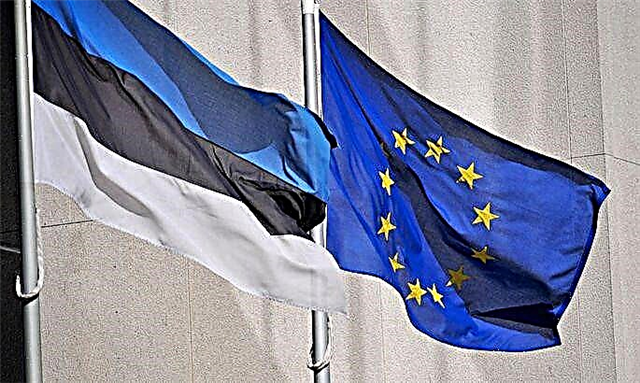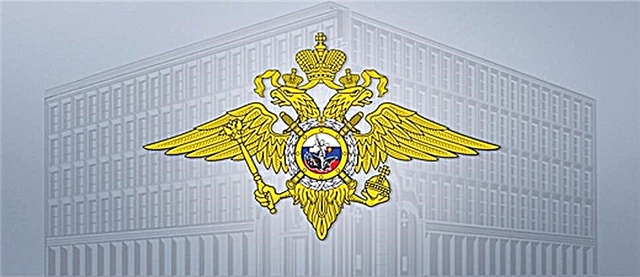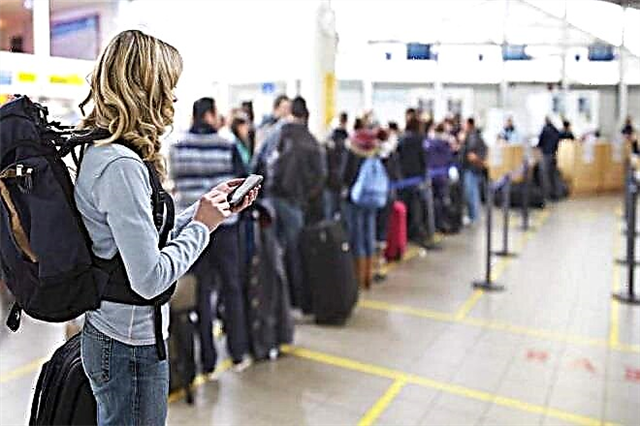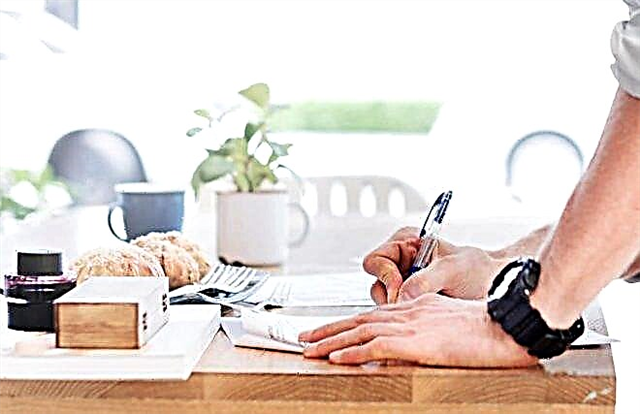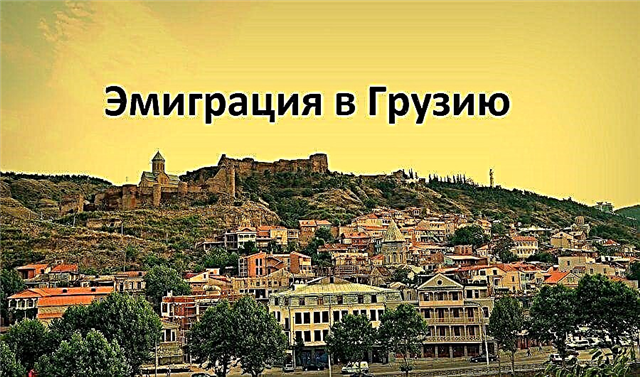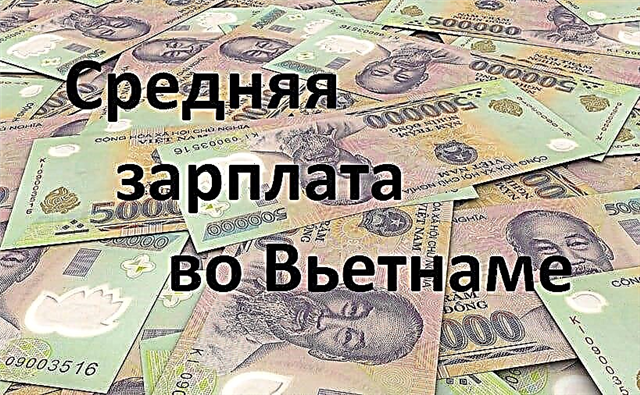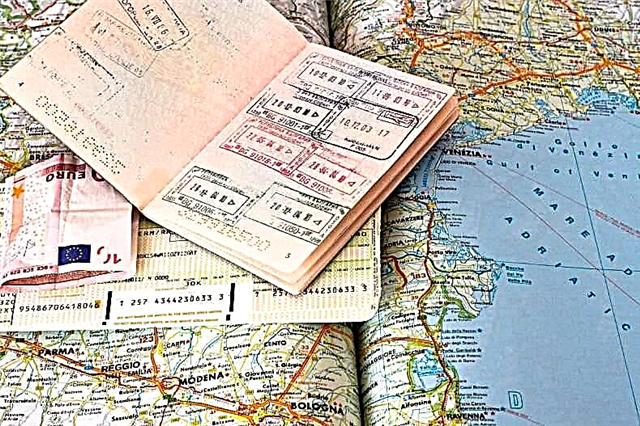Customs rules in Estonia will hardly surprise experienced tourists - the country is part of the EU, therefore the rules for crossing the border and transporting things and goods are governed by the rules of the Schengen area. But there are also some tricky nuances, depending on the method of crossing the border. For example, when driving a car, a unified queue information system is used. Below we will figure out in what order it is necessary to cross the border, what can be done for free, and what you will have to pay for.

What you need to cross the Estonian border
The Estonian border is the external border of the European Union, therefore its crossing is carried out in accordance with the Schengen rules. According to them, no matter in what order a foreigner from outside the EU crosses the Estonian border, he will definitely need to have with him:
- A valid passport valid for at least 3 months after the planned date of departure from the Schengen area. In this case, the document must be issued within the last 10 years.
- A visa stamp or residence permit issued by Estonia or another Schengen country. At the same time, citizens of some countries can cross the Estonian border without a visa, for example, citizens of Ukraine and Georgia. The full list of countries is here.
- Travel ticket, hotel reservation, other documents confirming the purpose and duration of the trip.
- Health insurance policy valid in the EU.
- The amount of cash or money on the card required to cover the expenses of a foreigner for the entire period of stay in Estonia.
The border and customs service has the right to check the availability of the specified documents and the passenger's luggage. If he does not fulfill the mandatory requirements, entry may be refused.
Estonian customs clearance
The customs rules of the Schengen zone not only regulate a foreigner in terms of the transportation of prohibited and limited goods, but also impose requirements for their declaration. At the same time, the procedure for passing the Estonian border and customs will differ depending on the type of transport used.
Customs clearance of passengers at airports
Arriving in Estonia by plane, foreigners go through customs procedures at airports.
Air passengers arriving in Estonia from outside the EU are allowed to carry goods for domestic non-commercial use in the total amount of 430 euros. The limitation does not apply to cash - passengers can freely carry with them an amount of up to 10 thousand euros in an equivalent currency.
If the indicated amounts are exceeded, the owners of the goods and money must declare the things they carry. How to do this, the official website of the Estonian customs tells in detail.
 There are three forms for filling out the declaration: electronic, oral and written. An electronic declaration must be submitted by a foreigner 3 days before crossing the border. This can be done in the electronic environment of the Tax and Customs Board (identification through ID services or Internet banking is required) or, if there is no access to it, through a special service.
There are three forms for filling out the declaration: electronic, oral and written. An electronic declaration must be submitted by a foreigner 3 days before crossing the border. This can be done in the electronic environment of the Tax and Customs Board (identification through ID services or Internet banking is required) or, if there is no access to it, through a special service.
In addition to the electronic form, it is allowed to declare goods and money in oral or written form. You will need to provide customs officers with a passenger's declaration, signed with your own hand.
In both cases, you will have to present the declared goods to the customs service, as well as documents on their quantity and value.
Customs rules provide for the choice of one of two types of corridors through which a passenger can leave the customs control zone:
- It is necessary to choose the green corridor if the passenger does not have the goods or funds to be declared.
- You must choose the red channel if the cost of goods is more than 430 euros, the permissible quantities of goods are exceeded (about them below), or the amount of cash exceeds 10 thousand euros. When passing the red corridor, it is also necessary to notify the customs officer about the preliminary electronic declaration.
Once declared, air passengers will be able to pay customs duties and taxes at the border customs office using a debit or credit card (excluding American Express) or cash in euros.
Border crossing rules by car
 When passing customs by car, the same procedure for declaring goods is applied as when crossing the border by plane. The only difference is the upper limit on the value of goods that can be transported duty-free - 300 euros.
When passing customs by car, the same procedure for declaring goods is applied as when crossing the border by plane. The only difference is the upper limit on the value of goods that can be transported duty-free - 300 euros.
To travel by car through customs, you will need the following documents:
- a new sample driver's license (plastic card) or an international driver's license;
- vehicle registration certificate, registration certificate;
- written consent of the owner of the vehicle for its operation by the driver, if he is not the owner, or a car rental agreement;
- "Green map".
You can cross the Estonian border by car at three checkpoints: Narva-Ivangorod, Koidula-Kunichina Gora and Luhamaa-Shumilkino. From 2021, each of them can be crossed only in the order of the queue formed by the special GoSwift information system. It allows you to plan the time of crossing the border and book it in advance without standing in a first line.
To cross the Estonian border by car, the driver must pre-book the crossing in the system, transferring information about the vehicle and the people who will be in it.
You can book a move:
- to internet addresses eestipiir.ee or estonianborder.eu;
- by calling the booking center +372 6 989 192.
Reservations are available at least 90 days before the border crossing. In this case, 1 hour is provided for crossing the border, for example, from 12.00 to 13.00. If during this time period the car has not arrived at the border checkpoint, the reservation will be canceled and the driver will have to take a new seat, possibly already in the general queue.
 If the reservation has not been made in advance, you can register in the general queue in the driver's waiting area in front of the border point - at a self-service kiosk or at the waiting area employee. In this case, it is difficult to predict the time spent on crossing the border - it all depends on the workload of the checkpoint. Reservations are not made at the border point itself.
If the reservation has not been made in advance, you can register in the general queue in the driver's waiting area in front of the border point - at a self-service kiosk or at the waiting area employee. In this case, it is difficult to predict the time spent on crossing the border - it all depends on the workload of the checkpoint. Reservations are not made at the border point itself.
There will be a EUR 1.5 charge upon booking + waiting area money if required. If there is no queue at the checkpoint, the booking fee will not be charged.
Only one driver and one vehicle can be selected when booking. If this information requires a change, such as a driver change, a new booking must be registered. The system allows you to specify several drivers at once, and then you can choose which of them will drive the car.
You can find more information on how to cross the border at road checkpoints on the website of the Police and Border Guard Board - politsei.ee.
Take a sociological survey!
[yop_poll id = ”14 ″]
Rules for transporting baggage through Estonian customs
The Schengen rules also set restrictions and bans on certain types of products. For example, specific norms have been established for the transport of alcohol and tobacco, dairy products and meat. Let's consider what and in what quantities can be imported into Estonia and what not.
What can be brought into Estonia and how much
 When entering Estonia, the same restrictions apply as when entering any other Schengen country. For different groups of goods, the customs impose different restrictions.
When entering Estonia, the same restrictions apply as when entering any other Schengen country. For different groups of goods, the customs impose different restrictions.
For example, the transport of food is strictly limited. From foodstuffs it is allowed to import only:
- fish products for personal consumption in any form, provided that 1 fish does not weigh 20 kg and, if it is fresh fish, then it is gutted;
- other products of animal origin, for example, honey, oysters or snails, if their total weight is not more than 2 kg;
- no more than 125 grams of sturgeon caviar;
- other products of non-animal origin used by passengers as food, in the amount necessary for personal consumption;
The limits for the import of food products are indicated on the website - emta.ee.
The rules for the import of animals into Estonia have also been established - according to them, only animals can freely cross the border:
- marked with a microchip or tattoo;
- having a passport or identification certificate;
- vaccinated against rabies.
When 5 or more animals are imported into the country, this is considered a trade quantity. Accordingly, they must undergo veterinary control and receive a certificate. This can be done only through an accredited checkpoint - the Luhamaa border checkpoint. More information about this on the website of the customs service.
Separately, it is worth considering the restrictions on the import of alcohol. So, foreigners who have reached the age of majority can import at a one-time border crossing:
- wines up to 4 liters (except for sparkling wine, liqueur wine);
- beer up to 16 liters;
- in addition, 2 liters of alcoholic beverages with an alcohol content of up to 22% (including sparkling wine, liqueur wine);
- or 1 liter of strong alcoholic beverage (with an alcohol content of more than 22%).
Please note that this rule does not apply to the export of alcohol: how much alcohol can be taken out of Estonia is determined by the customs regulations of the country where the foreigner leaves.
Corresponding standards are also defined for cigarettes and tobacco products. Adult foreigners can import:
- 40 cigarettes (air passenger - up to 200 cigarettes);
- or 100 cigarillos;
- or 50 cigars;
- or 50 grams of smoking tobacco (air passenger - up to 250 g of smoking tobacco), including hookah tobacco;
- or 20 milliliters of tobacco liquid;
- or 120 grams of solid tobacco substitute;
- or 20 grams of other tobacco products, or one pack of snuff, chewing or sucking tobacco.
For gasoline, diesel and other fuels, the following limits have also been determined for the carriage that allows entry into Estonia:
- fuel in a car tank in its normal amount;
- fuel in a canister in a volume not exceeding 10 liters.
For plants and plant products in 2021, it is allowed to be transported through the Estonian customs until:
- 5 plants, trees, bushes;
- 3 kg of citrus;
- 5 kg of other fruits and vegetables;
- 20 cut flowers or branches;
- 5 potted indoor flowers;
- 2 kg flower bulbs / tubers;
- 5 5 gram packs of seeds.
Customs rules also regulate the rules for the transport of drugs: passengers can carry up to 10 items of drugs, 5 packs of each, and up to 5 items of 3 packs of each for the animals taken with them.
In addition, the carriage is limited:
- weapons and ammunition - they can only be imported with permission from the Police and Border Guard Board;
- pyrotechnics - can be imported only with a permit for the import of explosive material;
- endangered plants and animals - can be imported only with documents from CITES.
These are the most important, but not all, limitations. Find out more about them on the customs website.
What can not be imported categorically
 With all this, the legislation of the Schengen zone also determines the list of things that cannot be imported into Estonia from Russia, namely:
With all this, the legislation of the Schengen zone also determines the list of things that cannot be imported into Estonia from Russia, namely:
- dairy and meat products in any quantities;
- edged weapons, firearms, ammunition prohibited in civilian circulation;
- counterfeits, including counterfeit branded goods, such as clothing and shoes;
- drugs;
- pirated versions of software, audiovisual products;
- erotic and pornographic materials;
- animal and plant species that threaten the natural balance.
A similar list of goods is prohibited for export to any other country.
TaxFree
 TaxFree in Estonia is a VAT refund system for the export of goods purchased on its territory from the EU. This will allow the buyer - a non-EU resident - to return up to 20% of the value of the goods if it (in relation to one purchase) exceeds 38 euros.
TaxFree in Estonia is a VAT refund system for the export of goods purchased on its territory from the EU. This will allow the buyer - a non-EU resident - to return up to 20% of the value of the goods if it (in relation to one purchase) exceeds 38 euros.
Stores where you can apply for VAT refunds are easily recognized by the Global Blue mark. When making purchases in them, the buyer will receive a receipt and a tax-free form.
When leaving the border checkpoint, find a counter marked Tax Free / Global Blue and contact a specialist on site - he will help fill out the necessary documents and indicate where to leave them. For some time, the money will be transferred to your card.
Conclusion
Estonia is a country of the Schengen agreement, and therefore, when entering it, the rules and restrictions apply, which are common in other EU countries. Customs rules provide for a number of restrictions and prohibitions for passengers on the quantity and value of goods. In some cases, passengers will have to fill out a customs declaration.

